Victory Gardens - History
The History of Victory Gardens
Victory Gardens first rose in World War I. Victory Gardens were also called "War Gardens" or "Food Gardens for Defense". The United Kingdom and the United States pushed their citizens to produce their own food to support the war effort. They were planted both at private residences and on public land during World War I and World War II to reduce the pressure on the public food supply brought on by the war effort. City parks, backyards, playgrounds, and churches became gardens. These gardens produced up to 41 percent of all the vegetable produce that was consumed in the nation.
In 1941, World War II saw a dramatic increase in the number of Victory Gardens. Propaganda once again tied victory in the war to the gardens at home. Farmers grew essentials, while women at home grew vegetables for their families. Throughout the county people plowed front yards, lawns, backyards, flower gardens and vacant lots to grow their vegetables. Public land was also put to use, from the Boston Commons to the lawn at San Francisco City Hall, to parks in every city, including San Francisco's Golden Gate Park. There were over 800 gardens in Golden Gate Park.
In 1943, 20 million gardens were producing 8 million tons of food.
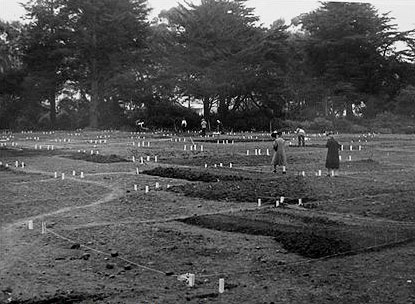
Victory Gardens in Sacramento
During WWII, significant emphasis was placed upon the “Homefront”. Rationing and security issues are often mentioned, but another “Front” was the effort to increase food production. A national effort was implemented entitled, “Victory Garden”. The Sacramento Bee and KFBK endorsed the program and sponsored three “Harvest Festivals” in 1943, ‘44, and ’45. Under the parent corporation of McClatchy Newspapers, a program of enlisting citizens to tear out their front and backyards and plant gardens with emphasis on fruits and vegetables was begun. To encourage local citizens, the Sacramento Bee had still photographer Bob Handsacker produce a 16mm color motion picture film. It is believed that Handsacker had never before produced a motion picture. Most of his editing was undertaken in his camera because he lacked the equipment to undertake significant post-production editing.
The film and promotional campaign was a great success. Three Harvest Festivals were held in Memorial Auditorium and the fruit and vegetables were sent to the Bercut Richards Cannery where they were canned under a “V” for victory label.
In 1945, the Sacramento Bee and KFBK, along with two other recipients on the West Coast, received a national plaque in recognition of their successful program. Eleanor Roosevelt sent a personal letter to Eleanor McClatchy complementing Sacramento on an outstanding program.
Below are two views of children working in gardens in East Sacramento. View 1 shows boys and girls working in a corn patch, houses in background ; view 2 shows girls working in a flower patch (probably mixed with vegetables and herbs), house and windmills behind them.
ca. 1915 or 1916.
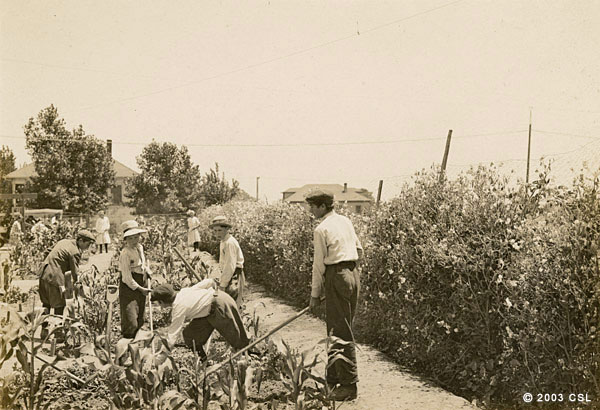
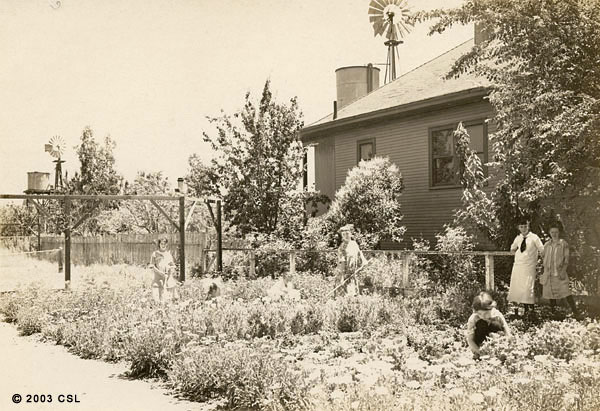
[School Garden in Highland Park, Sacramento] ca. 1915 or 1916
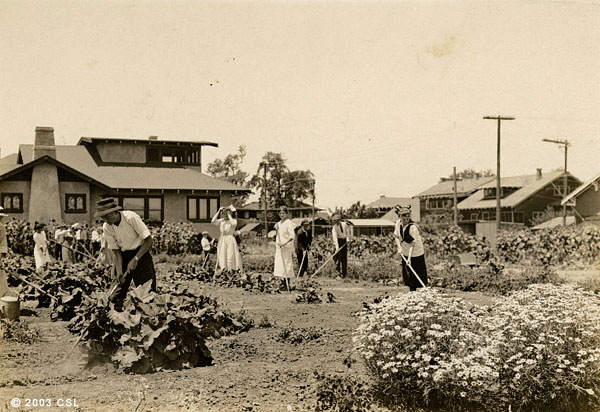
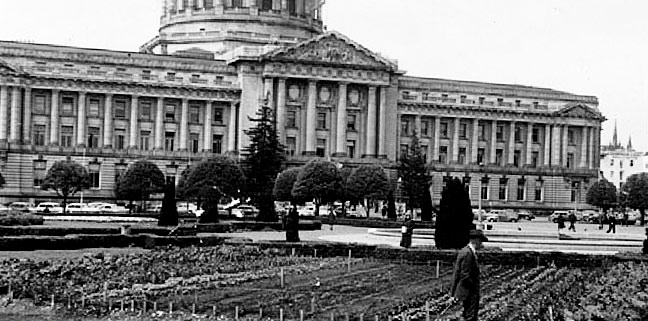 1943 Victory Garden in front of San Francisco City Hall
1943 Victory Garden in front of San Francisco City Hall